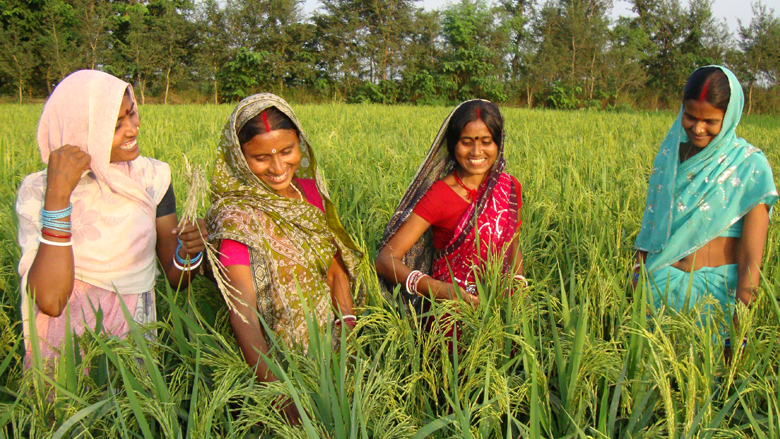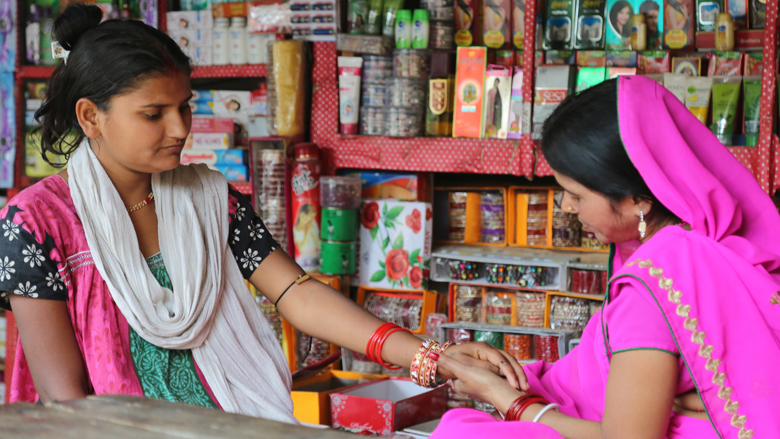Shakila Khatun is a small holder farmer in Purnea district of Bihar, India. Like many small farmers she wasn't able to get a fair price for the maize she produced—her main source of income. Until last year, she was forced to sell her maize to a trader who took the maize from her doorstep in exchange for a price based on a non-transparent system.
Things are different now. Khatun is part of a small holder farmers' "producer company," a collective managed by 1,465 women farmers. Last year, she sold nearly 30 metric tons of maize to the company, earning 20 percent more than the previous year.
"We are happy with the way things are going. Our target is to procure at least 5,000 metric tons. Last year we did 1,048," Khatun says. Members of the company use online trading platforms to discover fair prices for their produce. The company runs the transactions and stores the produce in a warehouse. It finances the commercial transactions of members, including credit of payment within three days of receiving crops.
Khatun is one of 1.8 million women in Bihar, who are part of a larger socio-economic change catalyzed by the Bank-supported Bihar Rural Livelihoods Project, popularly known as JEEViKA (livelihoods). The decade-long project has seen more than 1.8 million women from rural poor households organize into nearly 150,000 self-help groups, 9,500 village organizations and 161 cluster level federations. So far, these community institutions have leveraged nearly $93 million from commercial banks while mobilizing more than $23 million in their own savings.
The impact has been significant. The community institutions have reached more than 400,000 farmers with a one-stop-shop for agriculture including credit, inputs, digital agriculture extension, and farmers' field schools. They have supported many women in developing nutritious kitchen gardens at home. And an intensive behavior change campaign on health, nutrition and water, sanitation and hygiene resulted in significant behavior changes among women and households.
One key element of success is ownership and support by the government of Bihar, which views community institutions as critical for the implementation of livelihood and social welfare schemes.
"Apart from financial resources, it is critical to build capacity and provide sustained handholding support to these institutions," says Balamurugan D., chief executive officer for the Bihar Rural Livelihood Promotion Society.


